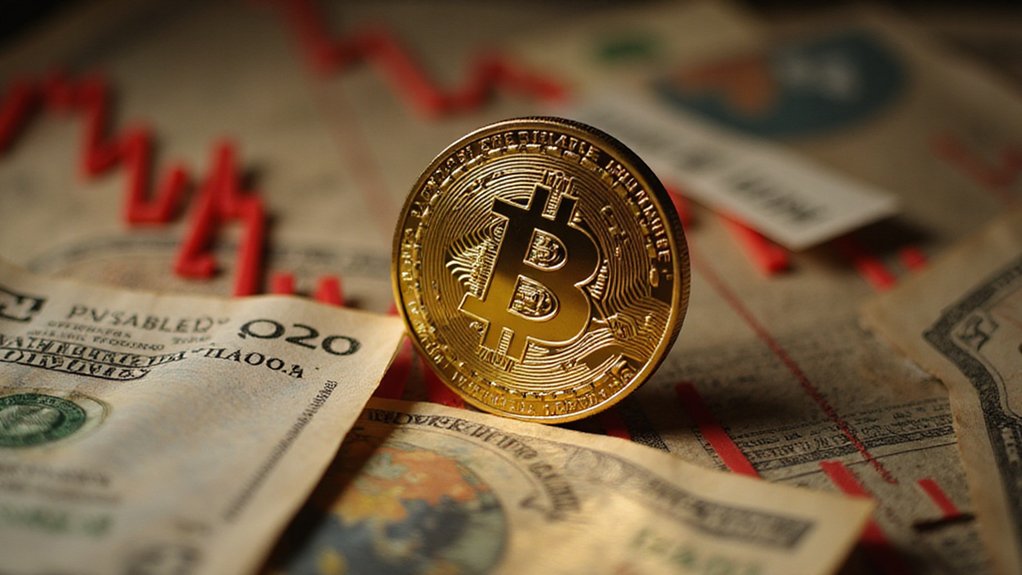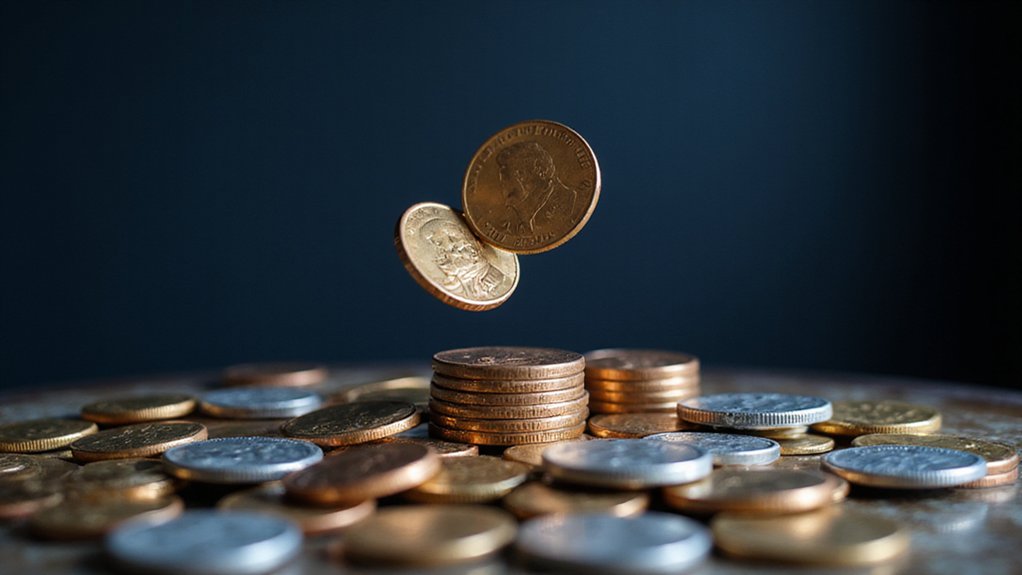While traditional financial systems continue to grapple with the challenges of digitization, stablecoins have emerged as a formidable bridge between conventional monetary structures and the evolving landscape of blockchain technology. The market’s meteoric rise to $238 billion in April 2025—following 19 consecutive months of gains—speaks volumes about investor confidence in these dollar-pegged digital assets.
Tether (USDT) continues its reign with a staggering $148 billion market cap, while USD Coin‘s ascent to $62.1 billion reflects the market’s voracious appetite for regulated stability in the notoriously volatile crypto space. This duopoly (commanding over 85% of the stablecoin market) presents a curious phenomenon: investors seeking the revolutionary potential of blockchain while simultaneously clinging to the dollar’s familiar embrace. With a total of 213 stablecoins existing in the market, the concentration of capital in just two assets highlights the winner-takes-all dynamics of the sector.
The regulatory landscape, however, remains treacherous terrain. Europe’s MiCA rules have forced USDT’s retreat from certain EU exchanges, while BUSD’s precipitous decline serves as a cautionary tale for those who navigate compliance waters carelessly. The annual transfer volume of $27.6 trillion in 2024 exceeded that of Visa and Mastercard combined, demonstrating stablecoins’ growing dominance in global payments infrastructure.
Regulatory compliance: crypto’s invisible hand that silently determines which digital currencies survive and which fade into obscurity.
Meanwhile, USDC’s strategic integration with traditional finance has propelled its growth—a proof to the paradoxical truth that in the “decentralized” future, regulatory acquiescence may determine winners. Emerging solutions like Kaanch Network are poised to further revolutionize this space with their instant token swaps and near-zero gas fees, potentially addressing key friction points in stablecoin transactions.
Decentralized alternatives like DAI and LUSD struggle with their philosophical purity; MakerDAO’s pivot toward real-world assets represents an inevitable compromise between idealism and practicality. Non-USD stablecoins, notably, have capitalized on dollar volatility, with their 30% growth suggesting a nascent appetite for genuinely alternative stores of value.
PayPal’s PYUSD exemplifies the new wave of corporate-backed digital currencies benefiting from established financial infrastructure, while FDUSD’s decline demonstrates the precarious nature of newer entrants lacking institutional buttressing.
As these digital assets become increasingly enmeshed with conventional finance, one must question whether stablecoins represent crypto’s ultimate triumph or its final capitulation to the systems it once sought to replace. The answer, like the technology itself, remains in perpetual flux—a fitting metaphor for finance’s digital metamorphosis.









